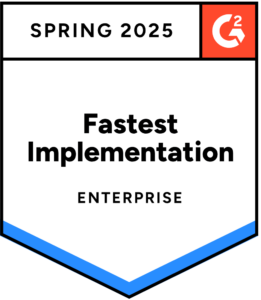Why Enterprises Should Invest in a Virtual Close
Blog post
Share
Businesses are using virtualization to their advantage, not only when it comes to the Office of Finance but when thinking about their workforce as well. The popularity of virtual work is increasing dramatically — especially now that it has become an expectation among generations currently entering the workforce. According to Deloitte, familiarity with managing at least a partly remote workforce (hybrid) is an expectation for post-pandemic CFOs.
Even though demand for a virtual close is climbing, many organizations don’t have tools that enable remote work. The typical tools used by finance and accounting (F&A) don’t allow for an on-demand financial close, remote or otherwise. Companies might have been able to get by with their current technology stack during the pandemic, but now many are seeking an alternative solution.
3 Reasons Finance Must Invest in a Virtual Close
Reason #1: To Reduce Costs
Investing in a virtual close can help reduce costs in the long run. An Accenture study found that organizations spend about $11,000 per full-time equivalent on facility expenses alone. Another recent survey states employees are also 15% more productive when working from home rather than in-office.
On top of efficiency gains due to working remotely, the right financial automation solution will provide boosted finance productivity by automating previously manual tasks. Automation improves accuracy and visibility, reduces risk and ultimately allows finance teams to do more with less. F&A teams can focus on high-value activities rather than having multiple status update meetings and dealing with tedious spreadsheet tasks.
With reduced facility costs and boosted finance productivity, a virtual close with the right financial automation solution significantly decreases costs while boosting efficiency.
Reason #2: Power an “Always On” Finance Function With an On-Demand Financial Close
In quickly changing market conditions, F&A teams must be “always-on” — meaning they need the ability to be flexible. Visibility through real-time data insights must be provided by finance teams in order to be “always-on”.
However, their focus often lies in completing the close with manual methods or spreadsheets, meaning there is no leftover time to focus on tasks like providing data to support the strategic direction of the organization during critical times, such as in an M&A event. Having an on-demand financial close that functions virtually is key to an “always-on” finance function.
Reason #3: Attract and Retain Top Finance Talent
People, and the skills they bring to the organization, are arguably the most critical element of a successful Office of Finance.
Providing remote work benefits means there is a higher chance to attract and retain top talent in a wider geographic pool than ever before. This boosted access to talent is of high importance because hiring is now harder due to a skills shortage, especially when it comes to digital acumen. Digital fluency skills are required to support a virtual close and an “always-on” finance function. Obtaining these skills, whether through hiring new talent or developing existing talent, is important to effectively support a remote, on-demand financial close and adapt to tech advancements required for businesses today.
Automation in a financial close solution yields ROI in this area as well. Accounting and finance is notorious for working late nights and long weekends in order to meet close deadlines. And, despite all the effort, when it comes to manual methods and spreadsheets, the accuracy of the period-end reporting is not guaranteed.
Automation provides support for personnel to shift their focus from manual tasks to high-value, strategic initiatives. But under-utilizing the high-level skillset of accountants, organizations risk losing individuals with key knowledge and responsibilities in the close process. Implementing technology will help promote finance productivity and greater job satisfaction. With this support, organizations will see increased loyalty and talent retention, which is a significant benefit to potential new hires whose onboarding process can be streamlined with a financial close solution in-person or virtually.
How to Enable a Virtual Close with ServiceNow and Trintech
Organizations can empower their F&A teams by maximizing their current IT investment: the ServiceNow Platform®. CadencyDirect® by Trintech, a Built on Now™ application and the only financial close solution trusted by ServiceNow, provides a System of Controls that standardizes and automates the financial close process in a virtual environment.
The Now Platform® is an investment that IT teams are already familiar with, yields proven ROI and facilitates connection across the enterprise to a department that has historically been siloed away due to outdated processes.
By leveraging CadencyDirect, organizations can experience:
- Reduced time spent on transaction matching by up to 80%
- Reduction in overall accounts to reconcile by up to 90%
- Reduction in risk of revenue impact due to misstatements by 14%
- Decreased employee turnover by 12%
The future of finance is (partly, at the very least) virtual. Organizations that start their financial transformation journey must ensure they embark on this journey with a partner they trust.






